#laser interferometer gravitational wave observatory
Explore tagged Tumblr posts
Text
Laser light simultaneously shot down vacuum tunnels inside each tube, and reflected back by highly polished mirrors, is used to measure the relative length of each to fantastic accuracy.
"The Fabric of the Cosmos" - Brian Greene
#book quote#the fabric of the cosmos#brian greene#nonfiction#laser#light#vacuum#tunnels#laser interferometer gravitational wave observatory#ligo#fantastic#accuracy
0 notes
Text
CAN TWO SUPERMASSIVE BLACK HOLES MERGE??
Blog#440
Saturday, September 28th, 2024.
Welcome back,
A team of astrophysicists that includes the University of Toronto’s Gonzalo Alonso-Álvarez has shown that pairs of supermassive black holes can merge together into a single, larger black hole – a major breakthrough in addressing what is known as the "final parsec problem."
longstanding astrophysics problem refers to a discrepancy between the detection of gravitational signals permeating the universe – which astrophysicists previously hypothesized had emanated from millions of merging pairs of supermassive black holes (SMBHs) – and theoretical simulations which showed that the approach of SMBHs stalls when they’re roughly one parsec (about three light years) apart.

Not only did the final parsec problem conflict with the theory that merging SMBHs were the source of the gravitational wave background, it was also at odds with the theory that SMBHs – each billions of times more massive than our Sun – grow from the merger of less massive black holes.
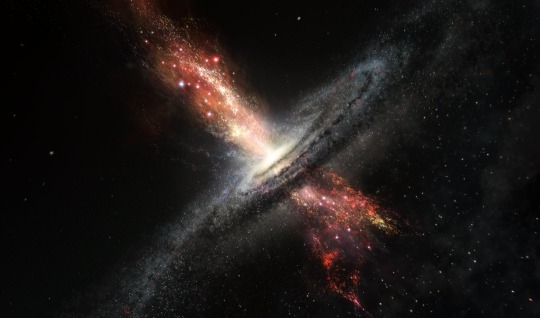
The new research, published in Physical Review Letters, has shown that pairs of SMBHs can indeed break through the one-parsec barrier and merge into a single black hole. This is demonstrated by calculations showing that SMBHs continue to draw closer because of previously overlooked interactions with particles within the vast cloud of dark matter surrounding them.

“We show that including the previously overlooked effect of dark matter can help supermassive black holes overcome this final parsec of separation and coalesce,” says Alonso-Álvarez, a post-doctoral fellow in the department of physics at U of T’s Faculty of Arts & Science and the department of physics and Trottier Space Institute at McGill University, who is first author on the paper. “Our calculations explain how that can occur, in contrast to what was previously thought.”

SMBHs are thought to lie in the centres of most galaxies. When two galaxies collide, the SMBHs fall into orbit around each other; as they revolve around each other, the gravitational pull of nearby stars tugs at them and slows them down, causing them to spiral inward toward a merger.
Previous merger models showed that when the SMBHs approached to within roughly a parsec, they begin to interact with the dark matter cloud or halo in which they are embedded. These models indicated that the gravity of spiraling SMBHs throws dark matter particles clear of the system.
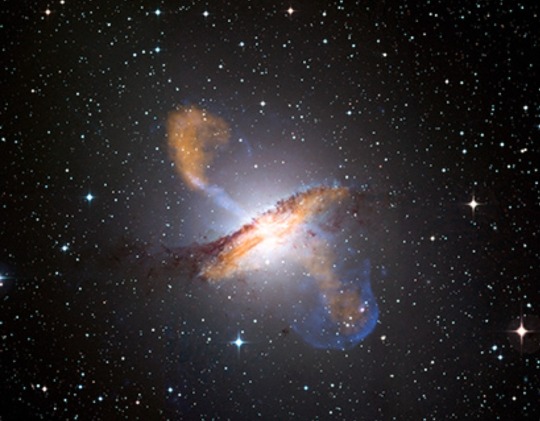
The new model introduced by Alonso-Álvarez and co-authors James Cline, a professor at McGill University and the European Organization for Nuclear Research (CERN) in Switzerland, and Caitlyn Dewar, a graduate student at McGill, reveals that dark matter particles interact with each other in such a way that they are not dispersed. The density of the dark matter halo remains high enough that interactions between the particles and the SMBHs continue to degrade the SMBH’s orbits – clearing a path to a merger.

“The possibility that dark matter particles interact with each other is an assumption that we made, an extra ingredient that not all dark matter models contain,” says Alonso-Álvarez. “Our argument is that only models with that ingredient can solve the final parsec problem.”
The background hum generated by these colossal cosmic collisions is made up of gravitational waves of much longer wavelength than those first detected in 2015 by astrophysicists operating the Laser Interferometer Gravitational-Wave Observatory (LIGO).

Those gravitational waves were generated by the merger of two black holes, both some 30 times the mass of the Sun.
The background hum has been detected in recent years by scientists operating the Pulsar Timing Array. The array reveals gravitational waves by measuring minute variations in signals from pulsars, rapidly rotating neutron stars that emit strong radio pulses.
Originally published on https://www.utoronto.ca
COMING UP!!
(Wednesday, October 2nd, 2024)
"WHERE DID MARS' ATMOSPHERE GO??"
#astronomy#outer space#alternate universe#astrophysics#universe#spacecraft#white universe#space#parallel universe#astrophotography
76 notes
·
View notes
Text
Queer Figures in Astronomy & Space Exploration: Dr. Nergis Mavalvala

Dr. Nergis Mavalvala is a Pakistani-American astrophysicist known for her work with gravitational waves
Born in Lahore, Pakistan in 1968, and holds dual Pakistani and American citizenship
Professor of Astrophysics and Dean of Science at the Massachusetts Institute of Technology
First woman to serve as MIT’s Dean of Science
Her 1997 PhD thesis dealt with her work with German-American physicist Rainer Weiss on designing a laser interferometer to detect ripples in spacetime known as gravitational waves
Ideas from Mavalvala’s thesis contributed to the eventual design of the Laser Interferometer Gravitational-Wave Observatory (LIGO)
She was a member of the team that first detected gravitational waves on 14 September, 2015, roughly 100 years after Albert Einstein had predicted their existence
The discovery was announced on 11 February, 2016, and is known as the GW150914 Event
Mavalvala is openly a lesbian, and she and her partner have 2 children
#solreefspeak#space things#queer#lgbtq#lesbian#queer figures in astronomy & space exploration#pride month#nergis mavalvala#part 1 of my project for this month! hoping to post every other day :)
9 notes
·
View notes
Text
5 notes
·
View notes
Text

Study reveals new source of the heavy elements
Stellar collapse and explosions distribute gold throughout the universe
Magnetar flares, colossal cosmic explosions, may be directly responsible for the creation and distribution of heavy elements across the universe, suggests a new study.
For decades, astronomers only had theories about where some of the heaviest elements in nature, like gold, uranium and platinum, come from. But by taking a fresh look at old archival data, researchers now estimate that up to 10% of these heavy elements in the Milky Way are derived from the ejections of highly magnetized neutron stars, called magnetars.
Until recently, astronomers had unwittingly overlooked the role that magnetars, essentially dead remnants of supernovae, might play in early galaxy formation, said Todd Thompson, co-author of the study and a professor of astronomy at The Ohio State University.
“Neutron stars are very exotic, very dense objects that are famous for having really big, very strong magnetic fields,” said Thompson. “They’re close to being black holes, but are not.”
While the origins of heavy elements had long been a quiet mystery, scientists knew that they could only form in special conditions through a method called the r-process (or rapid-neutron capture process), a set of unique and complex nuclear reactions, said Thompson.
Scientists saw this process in action when they detected the collision of two super-dense neutron stars in 2017. This event, captured using NASA telescopes, the Laser Interferometer Gravitational wave Observatory (LIGO) and other instruments, provided the first direct evidence that heavy metals were being created by celestial forces.
But further evidence showed that other mechanisms might be needed to account for all these elements, as neutron star collisions might not produce heavy elements fast enough in the early universe. According to this new study, building on these clues helped Thompson and his collaborators recognize that powerful magnetar flares could indeed serve as a potential ejectors of heavy elements, a finding confirmed by 20-year-old observations of SGR 1806–20, a magnetar flare so bright that some measurements of the event could only be made by studying its reflection off the moon.
By analyzing this magnetar flare event, researchers determined that the radioactive decay of the newly created elements matched up with their theoretical predictions about the timing and types of energies released by a magnetar flare after it ejected heavy r-process elements. The researchers also theorized that magnetar flares produce heavy cosmic rays, extremely high-velocity particles whose physical origin remains unknown.
“I love new ideas about how systems work, how new discoveries work, how the universe works,” Thompson said. “That’s why results like this are really exciting.”
The study was recently published in The Astrophysical Journal Letters.
Magnetars may provide unique insights into galactic chemical evolution, including the formation of exoplanetary systems and their habitability.
Not only do magnetars produce valuable metals like gold and silver that end up on Earth, the supernova explosions that cause them also produce elements like oxygen, carbon and iron that are vital for many other, more complex celestial processes.
“All of that material they eject gets mixed into the next generation of planets and stars,” said Thompson. “Billions of years later, those atoms are incorporated into what could potentially amount to life.”
Altogether, these findings have deep implications for astrophysics, particularly for scientists studying the origin of both heavy elements and fast radio bursts – brief shivers of electromagnetic radio waves from faraway galaxies. Understanding how matter ejects from magnetars could help scientists learn more about them.
Due to their rarity and short duration, magnetar flares can be difficult to observe,
and current space-based telescopes like the James Webb Space Telescope and Hubble don’t have the dedicated abilities needed to detect and study their emission signals. Even more specialized observatories like NASA’s Fermi Gamma-ray Space Telescope can only see the brightest part of gamma-ray flashes from nearby galaxies.
Instead, one proposed NASA mission, the Compton Spectrometer and Imager (COSI), could bolster the team’s work by surveying the Milky Way for energetic events like giant magnetar flares. Though another event like SGR 1806-20 might not occur this century, if a magnetar flare did detonate in our backyard, COSI could be used to better identify the individual elements created from its eruption and allow this team of researchers to confirm their theory about where heavy elements in the universe come from.
“We’re generating a bunch of new ideas about this field, and ongoing observations will lead to even more great connections,” said Thompson.
IMAGE: Magnetars have magnetic fields that are a trillion times more powerful than those of ordinary stars. Photo: Getty Images
5 notes
·
View notes
Text
Atomic space and gravitational waves. On September 14, 2015, the Laser Interferometer Gravitational-Wave Observatory (LIGO) became the first observatory to detect gravitational waves on Earth. When two black holes, located about 1.3 billion light-years from Earth, merged, they created gravitational waves - ripples in space and time. The detected signal came from the merger of two giant black holes - with masses of 36 and 29 solar masses. Gravitational waves from their collision reached the LIGO detector, causing the distance between its mirrors, separated by 4 kilometers, to change by about 1/1000th the diameter of a proton. In the video, the proton's motion shows tiny changes measured by LIGO detectors. Video: LIGO Lab Caltech/MIT
23 notes
·
View notes
Text

youtube
🎬 Watch The Television Show Trailer in the comments below:
Tuesday, Aug 27, 2024. Episode #1418 of 🎨#JamieRoxx’s www.PopRoxxRadio.com 🎙️#TalkShow and 🎧#Podcast w/ Featured Guest:
#ErinMacdonald (#PhD, #Astrophysics) is a #writer, #speaker, #producer, and #scienceadvisor, best known for her current work as the official science advisor for the #STARTREK franchise. Also Voice Actor on #StarTrekProdigy and the video game #StarTrekOnline.
Pop Art Painter Jamie #Roxx (www.JamieRoxx.us) welcomes Erin Macdonald (PhD, Astrophysics) is a writer, speaker, producer, and science advisor, voice Actress to the Show!
(Click to go there) ● WEB: www.erinpmacdonald.com ● IG: @drerinmac ( www.instagram.com/drerinmac ) ● IMDB: www.imdb.com/name/nm8574394
Erin Macdonald (PhD, Astrophysics) is a writer, speaker, producer, and science advisor, best known for her current work as the official science advisor for the STAR TREK franchise. She has also voiced her fictional counterpart in the Star Trek universe: Lt Cmdr Dr Erin Macdonald in Star Trek: Prodigy and the video game Star Trek Online. Known as “The Julia Child of Science,” as a science communicator Erin has appeared on NPR's Science Friday and Short Wave podcasts, provided commentary for numerous docuseries, and wrote and hosted the award-winning "Science of Star Trek" promotional videos for Paramount+. She wrote the baby board book "Star Trek: My First Book of Space" and wrote and narrated the Audible Original "The Science of Sci-Fi" in collaboration with The Great Courses.Prior to all of this work, she received her PhD at 25 at the University of Glasgow in Scotland and conducted research with the Laser Interferometer Gravitational-wave Observatory (LIGO) Scientific Collaboration, but left shortly before their 2017 Nobel Prize-winning discovery of gravitational waves. She also has worked as a museum educator, community college professor, and Department of Defense systems engineering technical advisor. She received dual BA’s from the University of Colorado at Boulder in Physics with Astrophysics (cum laude ) and Mathematics. Through her company Spacetime Productions, she produces award-winning sci-fi films by LGBTQIA+ creators. Her most recent film IDENTITEAZE written and directed by Jessie Earl is available for streaming at go.nebula.tv/identiteaze.
● Media Inquiries: Annie Jeeves Publicist Cinematic Red PR cinematicred.com
7 notes
·
View notes
Text
NASA Reveals Prototype Telescope for Gravitational Wave Observatory
NASA has revealed the first look at a full-scale prototype for six telescopes that will enable, in the next decade, the space-based detection of gravitational waves — ripples in space-time caused by merging black holes and other cosmic sources. The LISA (Laser Interferometer Space Antenna) mission is led by ESA (European Space Agency) in partnership […] from NASA https://ift.tt/BeUP295
5 notes
·
View notes
Text
Read in 2025

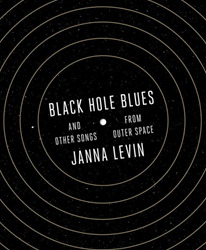
Janna Levin, Black Hole Survival Guide
Janna Levin, Black Hole Blues
I read Black Hole Survival Guide a few weeks ago and frankly can’t remember much about it. What I do recall is Janna Levin, much as in her other book I've read, How the Universe Got Its Spots, does a fairly good job of telling you about a weird part of astrophysics, in this case the strange world of black holes, but not in a way that stands out as strikingly different from what you probably know already – that they suck everything and don’t let much out (some Hawking radiation, whatever that is, I think).
Black Hole Blues, on the other hand, I thought was a remarkable book. It's about how the Laser Interferometer Gravitational-Wave Observatory, better known as LIGO, came into being. That’s the story of three physicists – each crazy in their own way – and various other players who between them were able to negotiate the tricky task of extracting hundreds of millions of dollars from the US’s National Science Foundation and use that money to build a pair of installations each with two 4-kilometre-long empty tubes that thanks to lasers and mirrors would be able to detect gravitational waves arising from two black holes collapsing into each other.
In other words, she tells you how science gets done, with a flavour of the kind of people who do it and many other bits and pieces, including a hint of the politics involved (why on earth otherwise would one of those installations be built in Louisiana?). Having lifted the cover on this very murky world, we better hope that not too many people pay attention, especially nowadays given who might want to have a say in how such government money is spent.
3 notes
·
View notes
Text
With LIGO and its subsequent improvements,* we will view the cosmos in a completely new way.
* One of these is the planned Laser Interferometer Space Antenna (LISA), a space-based version of LIGO comprising multiple spacecraft, separated by millions of kilometers, playing the role of LIGO's four-kilometer tubes. There are also other detectors that are playing a critical role in the search for gravitational waves, including the German-British detector GEO600, the French-Italian detector VIRGO, and the Japanese detector TAMA300.
"The Fabric of the Cosmos" - Brian Greene
#book quotes#the fabric of the cosmos#brian greene#nonfiction#laser interferometer gravitational wave observatory#ligo#improvements#cosmos#laser interferometer space antenna#lisa#germany#britain#geo600#france#italy#virgo#japan#tama300#spacecraft#tubes#gravitational waves#detection
1 note
·
View note
Text
DR. NERGIS MAVALVALA // ASTROPHYSICIST
“She is a Pakistani-American astrophysicist. She is the Curtis and Kathleen Marble Professor of Astrophysics at the Massachusetts Institute of Technology (MIT), where she is also the dean of the university's school of science. She was previously the Associate Head of the university's Department of Physics. Mavalvala is best known for her work on the detection of gravitational waves in the Laser Interferometer Gravitational-Wave Observatory (LIGO) project, and for the exploration and experimental demonstration of macroscopic quantum effects such as squeezing in optomechanics. She was awarded a MacArthur Fellowship in 2010.”
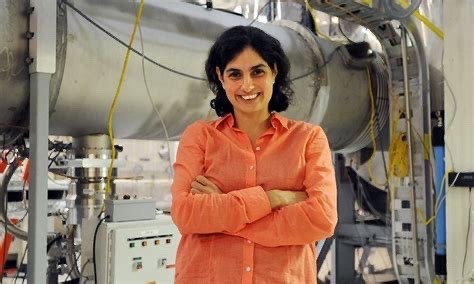
2 notes
·
View notes
Text
IS TIME INFINITE IN BLACK HOLES??
Blog#365
Wednesday, January 10th, 2024.
Welcome back,
The singularity at the center of a black hole is the ultimate no man's land: a place where matter is compressed down to an infinitely tiny point, and all conceptions of time and space completely break down. And it doesn't really exist. Something has to replace the singularity, but we're not exactly sure what.
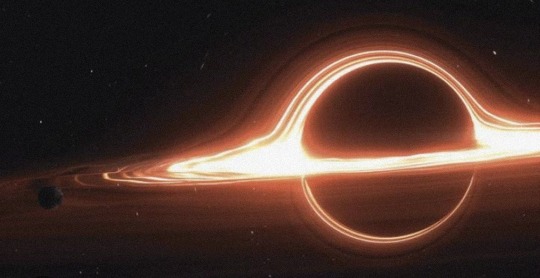
Let's explore some possibilities.
It could be that deep inside a black hole, matter doesn't get squished down to an infinitely tiny point. Instead, there could be a smallest possible configuration of matter, the tiniest possible pocket of volume.
This is called a Planck star, and it's a theoretical possibility envisioned by loop quantum gravity, which is itself a highly hypothetical proposal for creating a quantum version of gravity.

In the world of loop quantum gravity, space and time are quantized — the universe around us is composed of tiny discrete chunks, but at such an incredibly tiny scale that our movements appear smooth and continuous.
This theoretical chunkiness of space-time provides two benefits. One, it takes the dream of quantum mechanics to its ultimate conclusion, explaining gravity in a natural way.
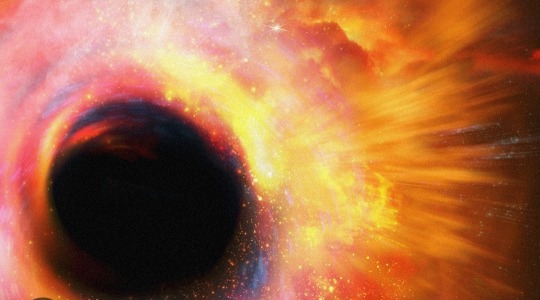
And two, it makes it impossible for singularities to form inside black holes.
As matter squishes down under the immense gravitational weight of a collapsing star, it meets resistance. The discreteness of space-time prevents matter from reaching anything smaller than the Planck length (around 1.68 times 10^-35 meters). All the material that has ever fallen into the black hole gets compressed into a ball not much bigger than this.

Perfectly microscopic, but definitely not infinitely tiny.
This resistance to continued compression eventually forces the material to un-collapse (i.e., explode), making black holes only temporary objects. But because of the extreme time dilation effects around black holes, from our perspective in the outside universe it takes billions, even trillions, of years before they go boom. So we're all set for now.
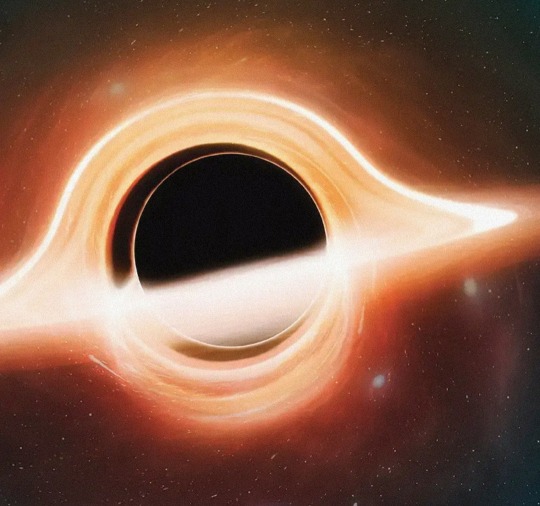
Another attempt to eradicate the singularity — one that doesn't rely on untested theories of quantum gravity — is known as the gravastar. It's such a theoretical concept that my spell checker didn't even recognize the word.
The difference between a black hole and a gravastar is that, instead of a singularity, the gravastar is filled with dark energy. Dark energy is a substance that permeates space-time, causing it to expand outward. It sounds like sci-fi, but it's real: dark energy is currently in operation in the larger cosmos, causing our entire universe to accelerate in its expansion.

As matter falls onto a gravastar, it isn't able to actually penetrate the event horizon (due to all that dark energy on the inside) and therefore just hangs out on the surface. But outside that surface, gravastars look and act like normal black holes. (A black hole's event horizon is its point of no return — the boundary beyond which nothing, not even light, can escape.)
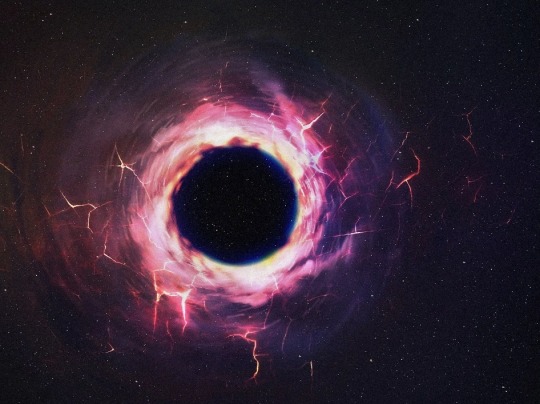
However, recent observations of merging black holes with gravitational wave detectors have potentially ruled out the existence of gravastars, because merging gravastars will give a different signal than merging black holes, and outfits like LIGO (the Laser Interferometer Gravitational-Wave Observatory) and Virgo are getting more and more examples by the day. While gravastars aren't exactly a no-go in our universe, they are definitely on thin ice.
Originally published https://www.space.com/
COMING UP!!
(Saturday, January 13th, 2024)
"JUPITER HAS A LARGE MAGNETIC FIELD THAN PREVIOUSLY EXPECTED??"
#astronomy#outer space#alternate universe#astrophysics#universe#spacecraft#white universe#parallel universe#astrophotography#space#blackholes#black holes
154 notes
·
View notes
Text

What is LIGO ?
LIGO, the Laser Interferometer Gravitational-Wave Observatory, is a place where scientists detect gravitational waves. These waves are like ripples in space caused by big events, such as black holes colliding. LIGO uses lasers to measure tiny changes, helping us learn more about the universe. On the concept of LIGO the physicists are constructing the world's first Einstein's telescope ( on the borders of Germany, Belgium and Switzerland ) which will be using the concept of gravitational waves ( Proposed by Prof. Albert Einstein in his famous paper work on general relativity in the year 1915 ) to view astronomical events .
6 notes
·
View notes
Link
2 min read NASA Reveals Prototype Telescope for Gravitational Wave Observatory NASA has revealed the first look at a full-scale prototype for six telescopes that will enable, in the next decade, the space-based detection of gravitational waves — ripples in space-time caused by merging black holes and other cosmic sources. On May 20, the full-scale Engineering Development Unit Telescope for the LISA (Laser Interferometer Space Antenna) mission, still in its shipping frame, was moved within a clean room at NASA’s Goddard Space Flight Center in Greenbelt, Maryland. NASA/Dennis Henry The LISA (Laser Interferometer Space Antenna) mission is led by ESA (European Space Agency) in partnership with NASA to detect gravitational waves by using lasers to measure precise distances — down to picometers, or trillionths of a meter — between a trio of spacecraft distributed in a vast configuration larger than the Sun. Each side of the triangular array will measure nearly 1.6 million miles, or 2.5 million kilometers. “Twin telescopes aboard each spacecraft will both transmit and receive infrared laser beams to track their companions, and NASA is supplying all six of them to the LISA mission,” said Ryan DeRosa, a researcher at NASA’s Goddard Space Flight Center in Greenbelt, Maryland. “The prototype, called the Engineering Development Unit Telescope, will guide us as we work toward building the flight hardware.” The prototype LISA telescope undergoes post-delivery inspection in a darkened NASA Goddard clean room on May 20. The entire telescope is made from an amber-colored glass-ceramic that resists changes in shape over a wide temperature range, and the mirror’s surface is coated in gold. NASA/Dennis Henry The Engineering Development Unit Telescope, which was manufactured and assembled by L3Harris Technologies in Rochester, New York, arrived at Goddard in May. The primary mirror is coated in gold to better reflect the infrared lasers and to reduce heat loss from a surface exposed to cold space since the telescope will operate best when close to room temperature. The prototype is made entirely from an amber-colored glass-ceramic called Zerodur, manufactured by Schott in Mainz, Germany. The material is widely used for telescope mirrors and other applications requiring high precision because its shape changes very little over a wide range of temperatures. The LISA mission is slated to launch in the mid-2030s. Download additional images from NASA’s Scientific Visualization Studio By Francis ReddyNASA’s Goddard Space Flight Center, Greenbelt, Md. Media Contact:Claire [email protected]’s Goddard Space Flight Center, Greenbelt, Md. Share Details Last Updated Oct 22, 2024 Related Terms Astrophysics Black Holes Galaxies, Stars, & Black Holes Goddard Space Flight Center Gravitational Waves LISA (Laser Interferometer Space Antenna) The Universe Keep Exploring Discover Related Topics Missions Humans in Space Climate Change Solar System
3 notes
·
View notes
Text



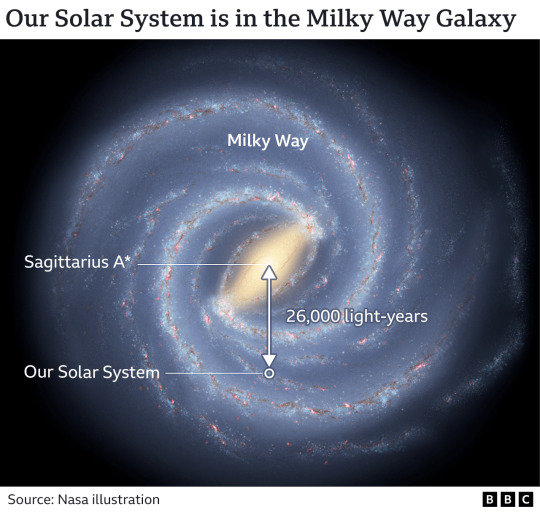
Origin of supermassive black hole Sagittarius A*
The origins of aptly named supermassive black holes – which can weigh in at more than a million times the mass of the sun and reside in the center of most galaxies – remain one of the great mysteries of the cosmos.
Now, researchers from the Nevada Center for Astrophysics at UNLV (NCfA) have discovered compelling evidence suggesting that the supermassive black hole at the center of our Milky Way galaxy, known as Sagittarius A* (Sgr A*), is likely the result of a past cosmic merger.
The study, published Sept. 6 in the journal Nature Astronomy, builds on recent observations from the Event Horizon Telescope (EHT), which captured the first direct image of Sgr A* in 2022. The EHT, the result of a global research collaboration, syncs data from eight existing radio observatories worldwide to create a massive, Earth-sized virtual telescope.
UNLV astrophysicists Yihan Wang and Bing Zhang utilized the data from the EHT observation of Sgr A* to look for evidence on how it may have formed. Supermassive black holes are thought to grow either by the accretion of matter over time, or by the merger of two existing black holes.
The UNLV team investigated various growth models to understand the peculiar rapid spin and misalignment of Sgr A* relative to the Milky Way’s angular momentum. The team demonstrated that these unusual characteristics are best explained by a major merger event involving Sgr A* and another supermassive black hole, likely from a satellite galaxy.
“This discovery paves the way for our understanding of how supermassive black holes grow and evolve,” said Wang, the lead author of the study and an NCfA postdoctoral fellow at UNLV. “The misaligned high spin of Sgr A* indicates that it may have merged with another black hole, dramatically altering its amplitude and orientation of spin.”
Using sophisticated simulations, the researchers modeled the impact of a merger, considering various scenarios that align with the observed spin properties of Sgr A*. Their results indicate that a 4:1 mass ratio merger with a highly inclined orbital configuration could reproduce the spin properties observed by the EHT.
“This merger likely occurred around 9 billion years ago, following the Milky Way’s merger with the Gaia-Enceladus galaxy,” said Zhang, a distinguished professor of physics and astronomy at UNLV and the founding director of the NCfA. “This event not only provides evidence of the hierarchical black hole merger theory but also provides insights into the dynamical history of our galaxy.”
Sgr A* sits at the center of the galaxy more than 27,000 light years away from Earth, and sophisticated tools like the EHT provide direct imaging that helps scientists put predictive theories to the test.
Researchers say that the findings from the study will have significant implications for future observations with upcoming space-borne gravitational wave detectors, such as the Laser Interferometer Space Antenna (LISA), which is planned to launch in 2035 and is expected to detect similar supermassive black hole mergers across the universe.
16 notes
·
View notes
Text
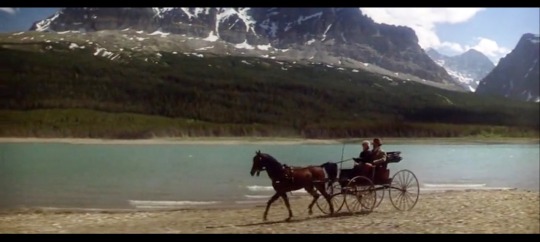
Movies I watched this week (Year 4, week 7)
Lord You Have Seduced Me, And I Was Seduced.
Into great silence is an unhurried, almost-wordless, 3-hour-long German documentary about the everyday life at the Grande Chartreuse monastery. About 2 dozen elderly men live there at the French Alps, in solitude and stillness, praying, doing penance & singing praises to God.
The director asked the order for permission to record the movie in 1984, and received their response 16 years later. He then lived with them in the cloister for 6 months, filming and recording on his own, and using only available light and sound. It's a meditative, hypnotic reflection into the ascetic life. 7/10.
🍿
LIGO (Director's Cut) is a different, most absorbing documentary about the Laser Interferometer Gravitational-Wave Observatory ("LIGO") and the painstaking path taken toward realizing and releasing their first major observation. It's a lot of smart scientists talking about doing complex science in an accessible way. Absolutely fascinating, even if - like me - you have no clue what they are talking about. 9/10.
If you are the type of person who likes this sort of thing, you'll probably like this.
🍿
The Wyoming's 1892 Johnson County War X 2:
🍿 Michael Cimino's epic western Heaven's Gate, the movie that killed the auteur movement, the 70's, and the one that started the enshittification of Hollywood. A bleak anti-western about the war against foreigners - and poor people in general - so relevant to today's ethos.
A magnificent, leisurely-told story (I watched the "Radical cut" of 219 minutes), with a serious ensemble: Not only Kris Kristofferson, Christopher Walken, John Hurt, Sam Waterston, Brad Dourif, Isabelle Huppert, Jeff Bridges, and Joseph Cotten, but also Mickey Rourke, Willem Dafoe and T Bone Burnett in small roles. Not that different from his earlier 'Deer Hunter', so why did it fail so spectacularly? (Photo Above)
🍿 "Shane! Come back!..."
First watch: The glorious technicolor western Shane, with very 1950's vibes and style. A mysterious gunslinger slings into (the picture), and Joey, a cloyingly-blond boy is enthralled by his mystique. Jean Arthur last film. 7/10.
🍿
Times are hard, and I need to replenish my resources of Léa Seydoux. The Last Mistress is a 2007 aristocratic period piece by Catherine Breillat about sexual obsession and societal expectations. Unfortunately, this was only Léa Seydoux's second film, so she only had a small role in it as a chambermaid. 6/10.
/ Female Director
🍿
As a child, I loved the books by mysterious writer B. Traven X 2:
🍿 Macario, an unexpected 1960 supernatural fable, my first by Roberto Gavaldón. Considered one of the greatest Mexican films which were not made by Luis Buñuel. 100% on Rotten Tomatoes, and the first Mexican film nominated for an Oscar. A poor woodcutter with 5 or 6 children who are always hungry, is dreaming of eating a whole turkey all by himself, but when he gets the once in a lifetime chance to do so, he shares it with an apparition of a man claiming to be even hungrier. For that, he is turned into a miraculous healer. What a gem! With the beautiful Pina Pellicer. 8/10.
🍿 "... Badges? We ain't got no badges. We don't need no badges! I don't have to show you any stinkin' badges..."
I never realized that this quote was from the fantastic The Treasure of the Sierra Madre, a story about all-for-nothing greed. With an award-winning performances by Walter Huston as the grizzled gold prospector, and a cameo by his son John Huston. Also, Humphrey Bogart, in the best role of his career, playing against type as an insane paranoiac loser. A good portion of the movie was spoken in Spanish without subtitles or translation.
First watch - 9/10.
🍿
Switzerland in 1975. I remember the didactic Jonah Who Will Be 25 in the Year 2000 from so many years ago as that important social-political manifesto of the times. But looking back at this group of people struggling with the failed revolutions of the 1960's, it's just outdated, dispirited and resigned. Sad and frustrated Marxism.
🍿
Michael Winterbottom's comfortable travelogue The trip to Greece, one of the only few series that I actually watched in full. A light, fictionalized version of Steve Coogan and Rob Brydon, as they drive for the 4th time to touristy locations, indulge in eating tasty dishes, and celebrate their friendship while playfully argue with each other. It's middle-brow travel-porn with money shots of food and vistas. The highlights of all these movies are always their impersonations of other celebrities. There's a diminishing rate of return with each new chapter in this saga, since they are basically always the same.
[It ends though with a rendering of Max Richter's On the Nature of Daylight, which is lovely.]
🍿
I loved Alice Wu's two queer rom-roms very much when I saw them a couple of years ago. So a Valentine Day re-watching of The half of it seemed natural. The cute Chinese teen, super-smart social-outcast, who lives alone with her dad, and who falls in love with another girl, sounded right up my alley. But on second look, it feels more like any other Netflix teen-drama, full of all the tropes and cliches you'd expect from one.
/ Female Director
🍿
A monster call, a dark fantasy about a boy whose mother is dying. I hardly ever watch these type of CGI-generated fairy tales where anthropomorphic trees can walk and anything can happen. Not my cup of tea. With Sigourney Weaver. 2/10.
🍿
2 with Emily Mortimer:
🍿 Harry Brown is a bloody and ugly vigilante, a-la 'Death Wish', with Old Man Michael Caine going medieval on the ass of the Clockwork Orange gang in his run-down housing estate. The only tiny sliver of redeeming value was Caine as the quiet, lonely pensioner who used to have 'a particular set of skills' in the old days when he served in Northern Ireland. 2/10.
🍿 TransSiberian, a pathetic 'thriller' about drugs and murder on a Russian train. Weak story, poor direction and un-charismatic actors (including another Woody Harrelson role as a Christian missionary worker, the 2nd time in two weeks). 1/10.
🍿
Juzo Itami's Supermarket Woman from 1996. A broad - very broad - folk comedy about "Hanako", an ordinary housewife who help a fledgling local supermarket turn around. Far away from 'Tampopo', but Itami still managed to build some small emotional payouts. It ends with a giant chase by a pimped up Dekotora truck. 3/10.
🍿
I have no idea how I came to watch the Australian TV series Fisk. A slight comedy about a strangely-calibrated middle-aged female lawyer who takes a job at a small firm in Melbourne which specialize in wills and probates. With bits of snappy dialogue and a few good jokes, it was light and breezy. But after 4 short episodes, I got the picture and signed off.
🍿
3 by Yugoslav animator Dušan Vukotić, and a few other shorts:
🍿 Vukotić was a co-founder of the 'Zagreb School'. His Surogat ('The Substitute') was the first foreign film to win the Oscar for animated short. A minimalist poem of whimsical shapes, reminiscent of the Italian 'La Linea'. A fat man goes to the beach and inflates every object in sight.
🍿 Cow on the moon, another charming gag of a girl fooling a bully to believe he landed on the moon.
🍿 Igra ('The game') is a terrific live-action/animation hybrid. Pencil drawings by a boy and a girl start fighting with each other. 8/10.
🍿 The experimental 1965 The Dot and the Line: A Romance in Lower Mathematics earned cartoonist Chuck Jones his only Oscar as a producer. It's an abstract romance, in a Saul Bass geometric style, with specific early-60's message of 'Victory of the Bohemian over the Square'.
🍿 Re-watch: Kid auto race at Venice, Charlie Chaplin first appearance as The Trump, 1914 - Colorized!
🍿 My Mom Is an Airplane! a cute fantasy for small kids by Russian Yulia Aronova.
/ Female Director
🍿 Kabul Sea (2010), a short little documentary by a female Afghani director, Alka Sadat.
/ Female Director
🍿 The pixel painter tells of Hal Lasko, a retired graphic designer who started creating digital art on Microsoft Paint after his 85th birthday. The conversations of his family which was left behind him are banal, but the illustrations are delightful.
🍿 The Beauty Of Past Lives and The Beauty Of French Cinema from a YouTube channel that does Video edits.
🍿 Riding shotgun, a strange 6-minute animated story about 2 'horny' assassins filled to the brim with weird sex, violence. coke and dirty toilets. Not for me.
🍿
My first film by Gaspar Noé (and surely also his last?), We fuck alone from 2006. The story is simple: A man and a woman masturbate to the same porn film in different rooms, under intense and irritating strobe lighting. That’s it. It’s literal porn, and the only place I could stream it was on a Pornhub clone.
I have zero objections to porn, but here I have to quote Malcolm Tucker (in conversation with 'In the loop' Linton Barwik): “I've come across a lot of psychos, but none as fucking boring as you! I mean, you are a real boring fuck! Sorry, I know you disapprove of the swearing, so I'll sort that. You are a boring eff-star-star-cunt.” 1/10.
🍿
..."Jack was pumping up a flat on the truck out on a back road when the tire blew up. The bead was damaged somehow and the force of the explosion slammed the rim into his face, broke his nose and jaw and knocked him unconscious on his back. By the time someone came along he had drowned in his own blood..."
First time read: Brokeback mountain, Annie Proulx's fine piece of short story, first published in the New Yorker. After re-watching Anne Hathaway's hurting face in that scene...
🍿
(My complete movie list is here)
2 notes
·
View notes